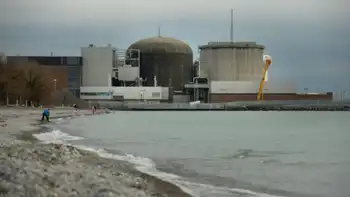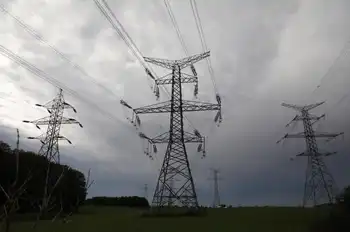Meter deals continue to energize utilities
By Seeking Alpha
CSA Z462 Arc Flash Training - Electrical Safety Essentials
Our customized live online or in‑person group training can be delivered to your staff at your location.

- Live Online
- 6 hours Instructor-led
- Group Training Available
The pilot project, now under review by the Illinois Commerce Commission, would involve 141,000 smart meters from GE with Silver Spring's communications technology installed.
The pilot will include tests of a host of services that many utilities are planning to bring to consumers as a next step after installing smart meters, which are often installed first to help utilities avoid manual reading, detect power outages and other utility-focused features.
But ComEd's test focus is on testing alternative pricing plans, web interfaces, in-home displays, home area network control systems and programmable thermostats – all pieces of what is generally referred to as a home area network.
ComEd, a subsidiary of Exelon Corp. (EXC), said it hopes to eventually install a smart grid infrastructure for its 3.8 million customers in Chicago and across northern Illinois. The fruits of its pilot project will likely guide what services it chooses to include – and which ones it chooses to pass on – for that large-scale deployment.
GE has made a big push into smart meters and a broader array of smart grid devices and technologies, competing with established meter companies like Itron (ITRI), Bayard Group/Landis Gyr, Elster and Sensus.
And Silver Spring has emerged as a forerunner in the business of providing radio frequency mesh communications and networking for those smart meters, with contracts with utilities including Pacific Gas & Electric Co., Florida Power & Light (FPL), American Electric Power and others.
GE and Silver Spring are also working together on smart meter deployments with PG&E, involving 5.3 million meters to be installed by 2011 at a cost of $1.7 billion, and FPL, involving 1 million meters to be installed in Miami for about $200 million, and eventually a $500 million deployment to bring smart meters to the rest of its customer base.
But ComEd's pilot will go further than those mass smart meter deployment in terms of the next-step services ComEd intends to provide. Other utilities, including Louisville Gas and Electric Co. and Ontario, Canada's Hydro One, have also been testing variable pricing and in-home device connectivity, among others.
ComEd didn't announce which partners it would choose to deliver the devices and systems to enable the various services it meant to provide in the pilot. Startups such as Tendril Networks, Energate, Control4, Greenbox Technology and Onzo have tested their energy monitoring and control technology with utilities.
And Google, which is getting into home energy monitoring with its PowerMeter offering, last month announced it had chosen eight utilities to work with on bringing the free, web-based energy monitoring platform to consumers. ComEd was not one of those utilities.
Cisco also announced it intends to bring home energy management systems to consumers as part of a broader smart grid effort, though it hasn't clarified how it intends to penetrate the SMART grid market.
Silver Spring announced it had secured contracts to provide networking for smart meter deployments with Australian electricity distribution utilities CitiPower and Powercor Australia.
The news follows an April announcement that Silver Spring technology would network about one million smart meters being deployed in Australia by utilities Jemena Electricity Networks and United Energy Distribution.











